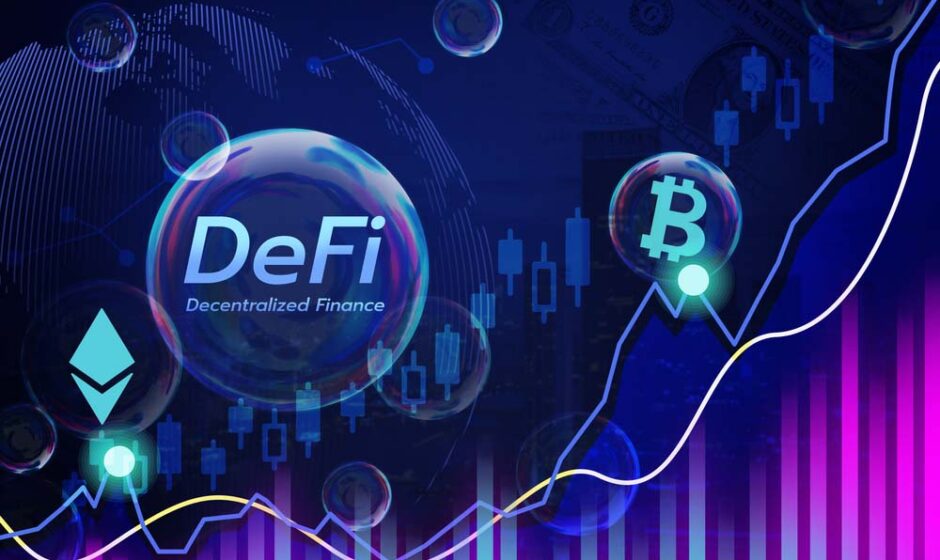The world of Decentralized Finance (DeFi) is rapidly evolving, transforming the way we think about and interact with financial services. Traditional financial systems have long been centralized, with banks and other institutions acting as intermediaries between individuals and markets. However, DeFi ecosystem, the advent of blockchain technology and cryptocurrencies has opened up a new frontier, enabling individuals to access financial services without relying on centralized intermediaries.
DeFi, which leverages blockchain technology to provide decentralized financial services, has exploded in popularity in recent years. With DeFi protocols, users can trade assets, borrow and lend money, earn interest, and more—all without needing to go through a bank or financial institution. But for beginners, the DeFi ecosystem can be overwhelming, with an abundance of platforms, tokens, and complex concepts to navigate.
In this guide, we’ll break down the basics of DeFi, explore some key DeFi concepts and platforms, and provide tips on how beginners can get started in this rapidly growing space.
What is DeFi?
DeFi stands for Decentralized Finance, a term used to describe a set of financial services that operate on a decentralized network, typically powered by blockchain technology. Unlike traditional finance, where intermediaries like banks, brokers, and insurance companies control and facilitate financial transactions, DeFi enables peer-to-peer transactions through smart contracts.
Smart contracts are self-executing contracts with the terms of the agreement directly written into code. This removes the need for intermediaries, reduces costs, and speeds up transactions. Most DeFi applications are built on top of Ethereum, the second-largest blockchain by market capitalization, but other blockchains such as Binance Smart Chain (BSC), Solana, and Avalanche are also emerging as DeFi hubs.
DeFi platforms allow users to access services such as:
- Lending and Borrowing: Lend your crypto assets to others in exchange for interest, or borrow assets with collateral.
- Decentralized Exchanges (DEXs): Trade cryptocurrencies directly with other users without the need for centralized exchanges.
- Yield Farming and Staking: Earn rewards by providing liquidity to DeFi protocols or staking your tokens to secure blockchain networks.
- Stablecoins: Digital currencies that are pegged to a stable asset, such as the US dollar, to minimize price volatility.
Key Concepts in the DeFi Ecosystem
Before diving into the world of DeFi, it’s important to understand some of the key concepts that underpin this ecosystem. Here’s a brief overview of the most important terms:
1. Smart Contracts
Smart contracts are the foundation of most DeFi applications. These are self-executing contracts written in code that automatically execute transactions when predefined conditions are met. Smart contracts enable trustless transactions—transactions that occur without relying on a third party to enforce the agreement.
For example, when you lend your assets on a DeFi platform, the smart contract will automatically execute the agreement to pay you interest and return your assets after the agreed-upon term.
2. Decentralized Exchanges (DEXs) in Defi
A DEX is a platform that allows users to trade cryptocurrencies directly with one another, without the need for a central authority or intermediary. Popular DEXs like Uniswap, SushiSwap, and PancakeSwap operate on decentralized networks, enabling users to buy, sell, and swap a wide range of tokens with low fees and fast transaction speeds.
Unlike centralized exchanges like Coinbase or Binance, which require users to deposit funds onto the platform, DEXs allow users to retain control of their assets, which are held in their personal wallets.
3. Lending and Borrowing
One of the key features of DeFi is the ability to lend and borrow cryptocurrencies without relying on traditional financial institutions. DeFi lending platforms like Compound, Aave, and MakerDAO allow users to lend their assets and earn interest, while borrowers can take out loans by providing collateral in the form of digital assets.
These platforms operate with smart contracts that manage the lending process, ensuring that borrowers can’t default on loans because they are required to over-collateralize their positions. If the value of the collateral falls below a certain threshold, the loan is liquidated to protect the lender.
4. Yield Farming and Staking
Yield farming and staking are two ways users can earn rewards for providing liquidity to DeFi protocols.
- Yield farming involves providing liquidity to decentralized exchanges or lending platforms and earning rewards in the form of interest or governance tokens. Yield farmers typically stake pairs of assets, such as ETH/USDT, in liquidity pools and earn a share of transaction fees.
- Staking involves locking up your cryptocurrency to support the security and functionality of a blockchain. In exchange for staking your assets, you earn rewards, typically paid in the same cryptocurrency. Ethereum 2.0 is an example of a blockchain that allows staking.
Both yield farming and staking are popular ways to earn passive income in DeFi, but they come with risks, such as impermanent loss (the potential loss of value when providing liquidity) and market volatility.
5. Stablecoins
Stablecoins are digital assets that are pegged to the value of a traditional currency (such as the US dollar) or another asset, like gold, to minimize price volatility. Common stablecoins include Tether (USDT), USD Coin (USDC), and Dai (DAI).
In the DeFi space, stablecoins play a critical role, allowing users to trade and lend assets without worrying about the significant price fluctuations that often occur with other cryptocurrencies. Stablecoins also serve as collateral for loans, making them a key component of DeFi lending platforms.
How to Get Started in DeFi
Getting started with DeFi can feel intimidating, but with a clear plan and the right tools, anyone can begin participating in this exciting new financial landscape. Here’s a step-by-step guide for beginners to understand DeFi ecosystem:
1. Set Up a Cryptocurrency Wallet
To use DeFi platforms, you need a cryptocurrency wallet. Wallets store your private keys and allow you to interact with DeFi protocols. Popular wallets include MetaMask, Trust Wallet, and Coinbase Wallet. These wallets are compatible with most DeFi platforms and support a wide range of cryptocurrencies.
When setting up your wallet, make sure to keep your private keys secure. Never share them with anyone, as they give access to your assets.
2. Buy Cryptocurrency
To participate in DeFi, you’ll need to purchase cryptocurrency. The most commonly used cryptocurrencies in DeFi are Ethereum (ETH) and Stablecoins (e.g., USDT, USDC). You can buy crypto on centralized exchanges such as Coinbase, Binance, or Kraken, and then transfer your assets to your DeFi wallet.
3. Explore DeFi Platforms
Once you have your wallet set up and some cryptocurrency in it, you can start exploring DeFi platforms. Some of the most popular DeFi protocols include:
- Uniswap: A decentralized exchange (DEX) where you can trade cryptocurrencies directly with other users.
- Compound: A decentralized lending and borrowing platform where you can earn interest by lending your assets.
- Aave: Another lending platform offering the ability to borrow and lend crypto assets with various collateral options.
- Yearn.finance: A yield farming aggregator that optimizes your earnings by moving your assets between the best DeFi platforms.
Start with smaller amounts and experiment with different DeFi services to get a feel for how they work.
4. Learn the Risks
DeFi can offer high rewards, but it’s important to remember that it also comes with risks. Some of the common risks in DeFi include:
- Smart contract vulnerabilities: Bugs or exploits in the code can lead to the loss of funds.
- Impermanent loss: When the value of the tokens in a liquidity pool changes significantly, leading to potential losses for liquidity providers.
- Market volatility: Cryptocurrencies can experience wild price fluctuations, which can affect your DeFi investments.
Always do your research before interacting with DeFi protocols, and never invest more than you’re willing to lose.
Conclusion
DeFi is transforming the financial landscape, giving users the ability to access financial services without relying on banks or intermediaries. While the DeFi ecosystem may seem complicated at first, understanding the core concepts of smart contracts, decentralized exchanges, lending platforms, and yield farming will help you navigate this space confidently.
To get started in DeFi, set up a cryptocurrency wallet, buy some assets, and explore DeFi platforms like Uniswap, Compound, and Aave. Keep in mind that while DeFi offers exciting opportunities for earning passive income, it’s important to be aware of the risks involved. With the right approach, you can take advantage of DeFi’s potential and unlock new financial opportunities.
Clifton M. Caviness a veteran crypto journalist with a keen eye for market trends and industry shake-ups. Clifton specializes in investigative reports and in-depth analysis of blockchain developments.


